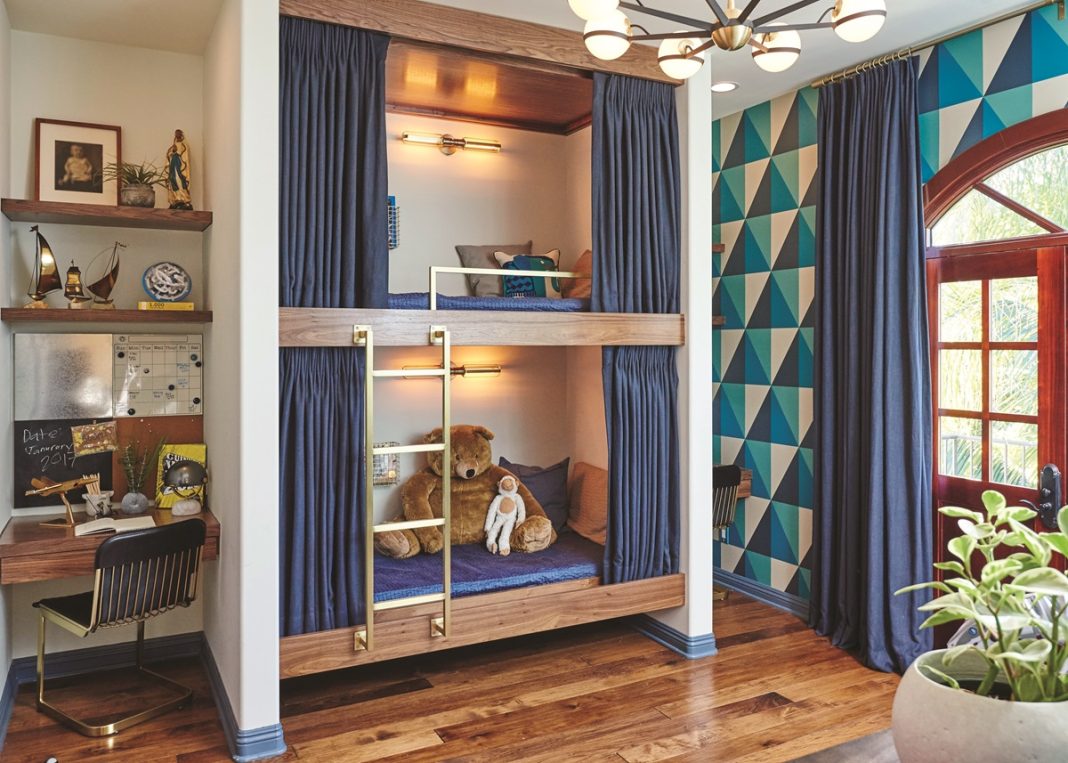Designing a home that works for the whole family is a gargantuan task. Add in considerations like sensory sensitivity and it might be difficult to know where to begin
Interior designer Sarah Barnard, who has WELL and LEED certification (the former focused on people’s health and wellness, and the latter on environmental impact and sustainability), is no stranger to the challenge, however, and can offer some advice.
“Room design is a crucial part of developing wellbeing at home,” she says.
“Our environment strongly impacts us, and creating a supportive space can reduce daily stressors. Everyone has specific needs, and many public spaces won’t align with personal preferences, causing discomfort and distress. It’s crucial to have a haven at home for decompressing.”
The impact of sensory stimuli can be exhausting, even for the neurotypical brain. Think of the oppressive cool blue glow of a hospital corridor or the assault of two radios tuned to different stations in an open-plan office.
It’s even more painful for an autistic person or an adult or child with ADHD, for example.
Sarah works closely with her clients to find solutions. This bedroom (main image) is a good example of her practice. “The focus here was on functionality and independence,” she explains. “The goal was to create diverse opportunities for usage while maintaining a calm environment.”
The bunkbeds are enclosed on all sides, and have blackout curtains to create private nooks.
“The curtains allow for a different atmosphere when open or closed, and each bed is equipped with a light and a small basket for books so it can function as both a sleep and lounge space.”
LIGHTING CHOICES
Lighting can be tricky too, and Sarah says that autonomy and versatility are crucial when developing this. Our preferences for lighting change throughout the day and seasons as natural rhythms shift, as well as with functional and emotional needs.
“Some people may find warmer lighting inviting or soothing, while others may prefer bluer tones and clarity of cooler lighting. It’s also beneficial to incorporate natural lighting wherever possible, both for a pleasant experience in the room and to help sync to nature’s daily and seasonal rhythms,” Sarah says.
CHOOSE YOUR COLOUR
Colour is also an important consideration – it can impact the mood and tone of the space. Each person will respond to colours differently, both emotionally and physically. “Many of our project’s palettes are pulled from nature, and I love working with clients to fine-tune an emotionally supportive palette. Colour can be a great way to instil a sense of happiness, peace or grounding calm,” says Sarah.
DIFFERENT TEXTURES
A diverse range of materials and textures are essential for visual and sensory interest in interior spaces. “I draw inspiration from nature and prioritise natural and sustainable materials,” says Sarah, “such as organic cotton and linen.” These are excellent options for textiles that can create a variety of experiences.
Natural stone has a cool surface that can be calming, while harvested hardwoods are warmer to the touch.
TOP TIPS FOR A HEALTHY, RELAXING BEDROOM
- Minimise distractions | Your sleeping space should offer the best opportunity for rest. If the room is multi-functional, plan the areas of the bedroom so that you reduce visual distractions when sleeping
- Think about the materials you use | Our bodies are in close contact with bedding for prolonged periods, so consider using natural materials to reduce allergens and irritants for healthy sleep
- Clean regularly | Our bedrooms can easily collect dust and debris, and regular dusting, vacuuming and laundering can help keep the bedroom space free of allergens
- Declutter the space | It’s not always possible to live a completely clutter-free life, but prioritising a few spaces with minimal distractions can provide opportunities for calm





